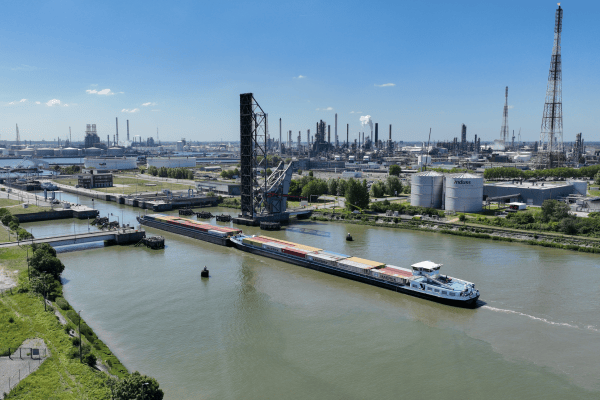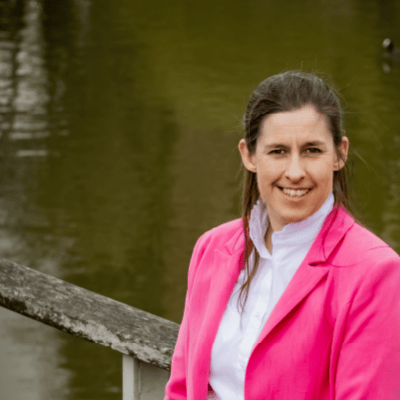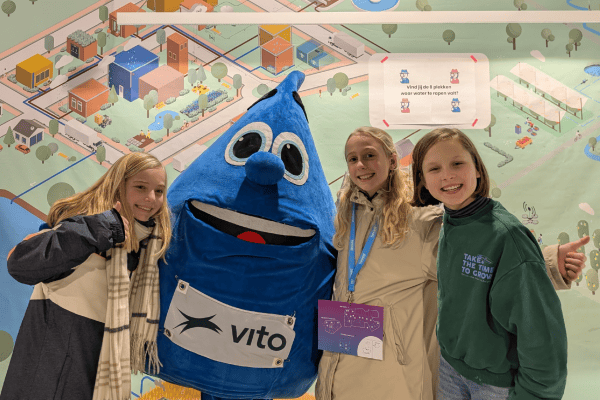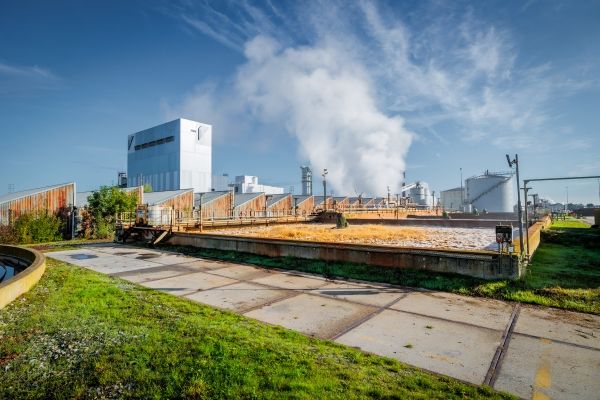A smart street, ready for the needs of tomorrow
In the fight against water scarcity, it is clear that we must use water more efficiently — including in the built environment. This brings challenges, but just as many opportunities. That was also the vision of B-rain Connect, a complementary network of actors such as manufacturers and water companies. Their cross-project perspective is delivering modular, future-proof solutions — as seen in the Smart Street in Wiekevorst.
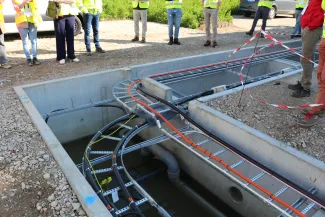
What is a smart street?
A modular concept that can be adapted to each project — that was the starting point. The smart street is not only centred around collective rainwater management, but also incorporates utilities and the integration of trees.
The smart street consists of a series of U-shaped concrete containers that function as both buffer and infiltration zones. This design allows rainwater from roofs and paved surfaces to be retained, reused, or filtered locally as much as possible. The concept aligns fully with the Regional Urban Planning Regulation on Rainwater (GSVH), which prioritises the Lansink ladder principle: avoid runoff > reuse > infiltration.
The smart street distinguishes between two types of rainwater. Rainwater from roofs flows directly into the buffer zone, which is connected via an overflow to an infiltration zone. Rainwater from paved surfaces, on the other hand, flows straight into the infiltration zone. The draining walls of the infiltration zone ensure that water gradually seeps into the ground. The various buffer zones are connected, forming a ‘buffer street’ from which local water users can extract water. An overflow to the sewer system is provided, but it is expected to remain unused, allowing the water to stay on site as much as possible.
The buffer street is made “smart” by integrating a central pumping system for rainwater reuse, and also by reserving space above the buffer zones for utilities such as electricity and data cables, as well as drinking water supply. These are neatly arranged on racks. The top slabs can easily be lifted using a suction cup system operated by a digger. The result: no messy tangle of underground cables and pipes — and none of the usual disruption (like digging damage, endless cable searches, or having to open footpaths and cycleways).
Climatic and demographic challenges are increasing the need for green spaces in urban areas. In the smart street, trees are given a central role, growing in optimal conditions. This is made possible through dedicated tree bunkers, each offering 15 m³ of underground space for root development. The water needs and health of the trees take priority, with a salt barrier system in place to prevent salt inflow during winter periods.
In practice
In Wiekevorst, the smart street concept has been put into practice for the first time in a new residential development comprising 33 homes and a GP surgery. The works were carried out by B-rain Connect and funded by the property developer. Upon completion, ownership and management of the infrastructure were transferred to the local water utility and sewer operator, Pidpa. The smart street in Wiekevorst will be finalised by the end of June 2025. Eleven homes are already occupied, and the remaining twenty-two will be inhabited by January 2026. Pidpa has also started monitoring rainwater availability, consumption, and quality.
Thanks to this collective approach, residents are completely unburdened. The homes no longer have individual rainwater tanks but are instead connected to a shared buffer. Toilets, washing machines, and outdoor taps are all connected to the rainwater network, in line with the GSVH. Pidpa is responsible for the entire system, including maintenance and supply of both drinking water and treated rainwater. Each home is equipped with two water meters. Residents are satisfied, well informed about how the system works, and view it as a best practice.
To ensure a high-quality alternative water source free from odour, colour, and suspended particles, Pidpa provides collective pre-treatment via pre-filters and an activated carbon filter. If there is not enough rainwater available, the system automatically supplements with drinking water.
Next to the housing development is a SPAR supermarket with a large roof surface. Since the store itself has low water demand, that rainwater is also diverted to the residential buffer zone — a great gain in rainwater for the homes that can reuse it.
The smart street offers yet another advantage: water can be infiltrated over a larger area. Normally, water is channelled to infiltration zones through infiltration pipes, but in the smart street, a continuous infiltration strip is created across the entire site.
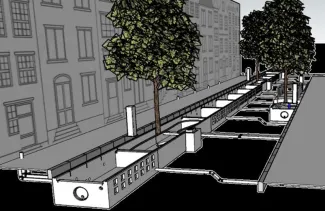
What does the future hold?
In the coming years, Pidpa aims to continue learning from the Wiekevorst project and any future initiatives around collective rainwater management, as well as from collaborations with other utility companies interested in adopting the smart street concept. The goal is to gain a clearer understanding of the tipping point at which a collective approach to rainwater — as a decentralised water source — becomes economically viable compared to the centralised drinking water network.
Pidpa also wants to assess the impact on central water supply operations, as increased decentralised water collection and distribution will influence the operating costs of delivering drinking water. In addition, there is a need to better understand end-user expectations. For instance: would users accept a lower service level for rainwater supply (e.g. interventions only during working hours) compared to the 7-days-a-week service standard for drinking water? And how should this be managed?
Pidpa also seeks to gain more experience in collaboration with other utility and telecom providers. In Wiekevorst, agreements were made between Pidpa and the companies that laid their utilities in the smart street modules. These include arrangements on intervention times (e.g. how soon access must be provided after a call-out). Pidpa is responsible for opening, pumping out, and preparing the containers for safe work.
The concept offers great potential not only for new residential developments, but also for business parks and cycle paths. The smart street is an effective alternative in locations where space is limited for buffering and infiltration through open structures like swales or retention basins.
The current smart street project is mainly a collaboration between B-rain Connect and Pidpa. However, other (water) utilities in Flanders and abroad have shown interest. The concept is now being incorporated into several new projects, including an SME zone, a residential area with a heating network, and a cycle path.
One thing is clear: the smart street holds great potential and is on its way to becoming a best practice, both nationally and internationally.
